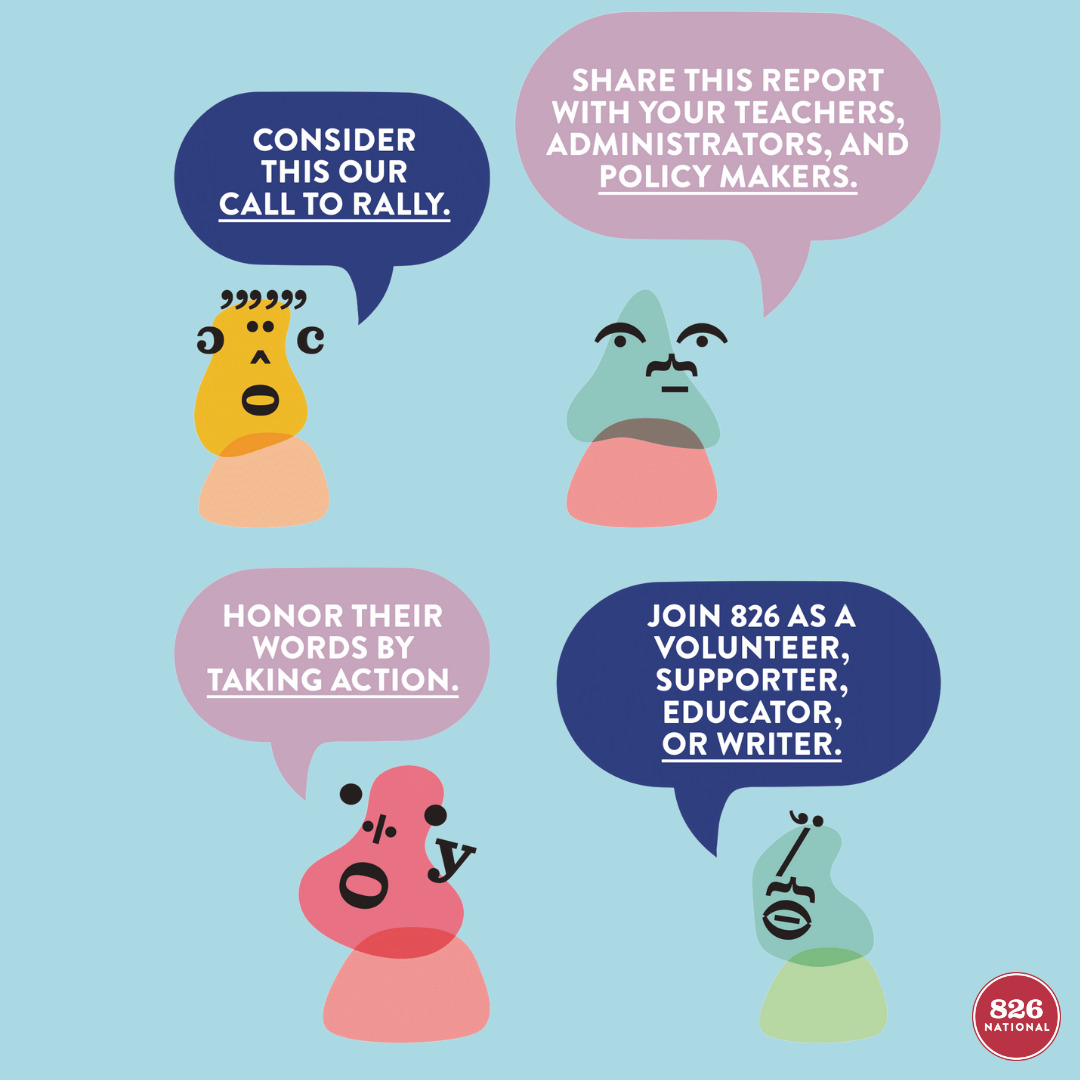
In 2020, the 826 National Research team published part one of “The Truth About Writing Education.” The first report in this series focused on creating awareness and solutions about the current state of writing education in America through interviews with experts in the field. Last month, we published the follow-up, “The Truth About Writing Education, Part Two: Raising Teacher Voices,” which highlights teachers’ perspectives and experiences in writing education.
The original report started as a literature review of writing education research. “But we soon learned that there was a dearth of recent research specific to the current state of writing education, so we decided to take matters into our own hands,” said Cynthia Chiong, Ph.D, Director of Research at 826 National, on why they pivoted.
“Since we didn’t find much research, we thought the best way to understand the current state of writing education was through the perspectives of those who would know best,” Cynthia elaborated. “We wanted to make sure that we addressed a variety of perspectives to set the baseline of today’s writing education landscape.”
In April 2022, the Research team surveyed over 200 ELA teachers grades 3-12 on the amount of time spent teaching writing in the classroom, their writing curricula, and on writing education PD (professional development). This report focused on teachers’ personal accounts, “as they are the ones on the ground truly experiencing what we’re talking about,” Cynthia explained.
Before starting the research, Cynthia and the Research team wanted to see if anything had changed since the release of the first report. But unfortunately, today’s teachers give the current state of writing education in America a D-.
“Given that writing has been shown to help students through challenging times, we hoped that meant writing was taking place in the classroom. Unfortunately, while we did see some increases earlier in the pandemic, we saw a significant drop in writing time this past school year as students returned to the classroom,” Cynthia observed.
This report confirms many of the findings from the first paper and provides strong evidence that the challenges in writing education remain, particularly during the ongoing pandemic. “We learned that nothing’s changed in at least 10 years – and that’s not ok,” Cynthia asserted.
The new report shows that only 33% of teachers strongly feel that they have the training they need to teach writing and only 4% of teachers report students write the daily recommended minimum amount of 30 minutes. And while 84% of teachers believe in the importance of celebrating student writing, only 24% report doing so.
However, the report is not all doom and gloom and suggests ways that we can improve the writing education landscape, including
- increasing dedicated time for students to write, both in classrooms and out
- developing standards-aligned writing curricula
- supporting teachers through professional development resources, a learning community, and inspiration for writing lessons; and
- continuing advocacy work to inform the field, the general public, policymakers, and funders about the challenges to and benefits of writing education.
Through this series of reports, the goal is to bring writing education to the forefront of conversations and to make changes within our education system. But we can’t do this alone.
In order to create more awareness on today’s writing education, the report lists some steps on making changes, including
- sharing the report with teachers, administrators, and policy makers.
- considering the four action steps above for those in education
- joining 826 as a volunteer, a supporter, an educator, and/or a writer
In the next report, Cynthia and the Research team will focus on how to elevate student voices and opinions from students’ perspectives.
“Writing is an essential skill, and the data clearly shows that we need to do more to help students succeed as writers.”
Read the executive summary and full report of “The Truth About Writing Education, Part Two: Raising Teacher Voices” here:


